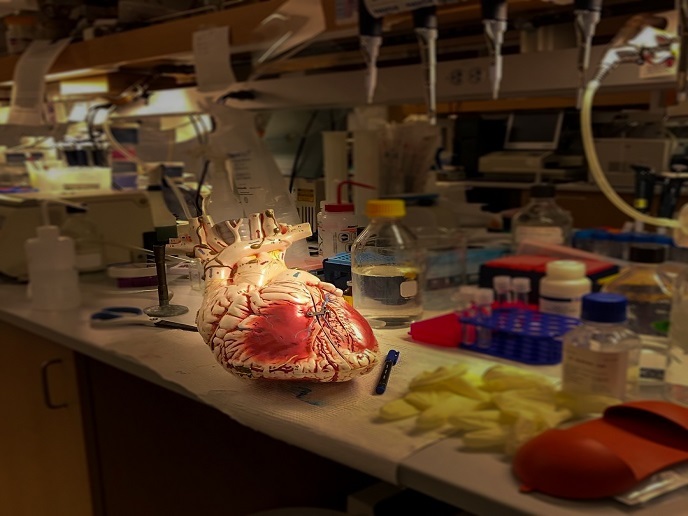Molecular insight into heart failure
HF is caused by diverse stress signals that trigger cardiomyocyte (heart muscle cell) death and loss of myofibrils responsible for the heart's contraction. Current strategies for HF management mainly target the secondary pathophysiology, and not the myocardial dysfunction itself, leading to high mortality. Therefore, there is an imminent need for new therapies that restore or preserve the heart's contractility.
Insight into the role of Titin in HF
Undertaken with the support of the Marie Skłodowska-Curie (MSC) programme, the Titin Signals project investigated the molecular mechanisms underlying cardiomyocyte loss. The work focused on the titin filament, a half a micron long giant protein responsible for the elasticity and biomechanical properties of cardiac muscle. Titin functions like a spring in the sarcomere, a unit of heart muscle tissue, and is also a core site for integrating regional signalling. Titin protein possesses unique binding sites in its N2A spring region for the cardiac ankyrin repeat protein (CARP), known to be upregulated in the myocardium – heart muscle tissue – during cardiovascular disease and in response to mechanical or toxic stress. Recent evidence in mouse models of HF demonstrated that inactivation of the CARP gene protects animals from HF, suggesting that the N2A-CARP interaction may serve as a new therapeutic target for HF. However, the mechanism underlying the molecular interaction of these two proteins in HF remains poorly understood. “We were interested in unveiling the functional relevance of this titin-CARP interaction in a pathophysiological context,” explains the MSC fellow Julius Bogomolovas. Using a structural biology approach, he investigated the molecular basis of CARP-N2A interaction. He then used animal models and cells to understand the relevance of this interplay at the cell and organism level. From a structural perspective, scientists discovered that the N2A region of titin breaks dimeric CARP to form 1:1 complex with adjacent areas in titin filament, playing a central role in complex formation. “A picture is worth a thousand words. Being able to see how titin and CARP interact in 3D opens new prospects for the design of novel HF therapies,” emphasises Bogomolovas. Moreover, these structural insights give a valuable tool to predict which mutations in titin or CARP are harmless and likely cause HF. “Finally, we start to understand the biological logic behind the increase of CARP and titin N2A under cardiac stress conditions; it seems that these proteins aim to biomechanically soften the blow in a stressed heart,” he continues.
Future prospects
Cardiovascular diseases are responsible for over 1.8 million deaths in the EU every year, incurring billions of euros in healthcare expenses and productivity losses. Titin has emerged as a key player in cardiac muscle homeostasis with mutations encountered in various heart muscle diseases. It has also been proposed as an alternative clinical biomarker to creatinine kinase and cardiac troponin to detect cardiomyocyte degradation indicative of myocardial infarction. “By providing fundamental knowledge on the molecular basis of HF, the Titin Signals project will help reduce this cost and improve patient management including those suffering from inherited heart muscle diseases,” Bogomolovas concludes. The information generated during the project can help towards guided drug development to regulate the titin-CARP interaction as a potential HF therapy.
Keywords
Titin Signals, titin, CARP, heart failure, cardiomyocyte, cardiovascular diseases







